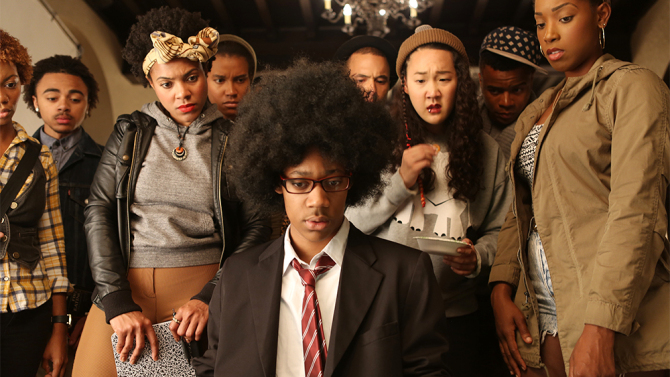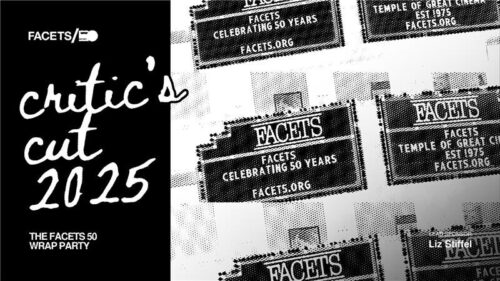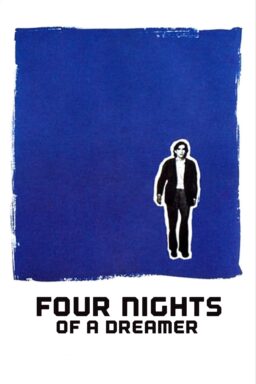The following review was written by Dyana Daniels, a Chicago high school student, as part of Columbia College Chicago’s Columbia Links journalism program for high school students. RogerEbert.com has partnered with the Chicago Urban League and Columbia Links to mentor these students and to give them a platform for their writing. Read more about the program here.
3.5 stars
Writer/director Justin Simien’s first film “Dear White People” debuted at the Sundance Film Festival in 2014, where it received the festival’s Special Jury Award for Breakthrough Talent. A satirical film, “Dear White People” takes audiences on a journey through the lives of four different-yet-similar college students as they try to discover who they are.
When people have no real cause
to fight for, they either go looking for one or they make up a new problem they
feel needs to be solved. That is exactly what Sam White (Tessa Thompson) seems
to be doing early on in “Dear White People.” A junior at the fictional
Winchester University, Sam hosts a radio show and is full of resentment because
of her identity issues. Her storyline intertwines with three other black
students at Winchester who are also struggling: Lionel (Tyler James Williams) wrestles with not being
“black enough,” Coco (Teyonah Parris) steps away from black culture unless it can get
her places and Troy (Brandon P. Bell) needs to impress his father instead of himself.
The film’s music ranges from classical to urban, and helps define its characters. Classical music
dominates, especially when it trails Lionel’s inability to fully relate to
black culture. Meanwhile, Sam has more of a R&B, hip-hop feel, much like Coco and
Troy. Throughout the film the audience sees how Sam struggles with who she
wants to be and how those around her perceive her. As a result of this struggle,
Sam embraces her role as a revolutionary on campus, until she’s forced to
accept herself and confront her personal issues.
While Sam attempts to “educate” her fellow students,
she first comes off as an overly aggressive young woman with identity issues;
she is light-skinned and biracial. Coco, on the other hand, wants to be noticed
by a reality show producer, so she decides to act like an exaggerated version
of a wannabe ghetto black person. Then there’s Troy, who is dating the
university president’s daughter and holding the title as head of house. No one
relates to Lionel—he puts out vibes that he wants to be alone when he actually
wants to be accepted.
The camera angles and use of color in this film are great. The
over-saturation in some daytime shots, the use of silhouettes and
bird’s-eye/worm’s-eye views give “Dear White People” a level of intimacy
between the actors and the viewer. In a scene where Lionel is sitting on
the steps outside trying to figure out his housing situation, he begins to fantasize
how his life would be different if he changed his appearance and what
his friends would like. This moment is important to the film as the
audience is able to see how Lionel is struggling to be accepted and just wants
to fit in on campus. The use of color during these personal moments helps to
set the tone for the scene and helps to further strengthen the narrative of how
difficult finding one’s self during college can be.
“Dear White People”
highlights some of the issues African Americans and other minorities experience
on college campuses. Although the film is satire, it should be viewed as a
powerful discussion tool when trying to understand the effects of race and
social status in a college setting. “Dear White People” manages to provide a
diverse image of just how challenging and unfamiliar college can be for
students when the pressure of life is all too common.











